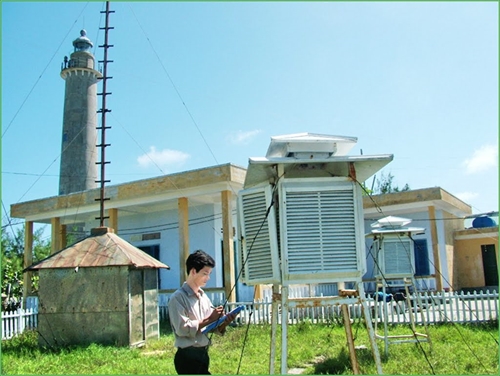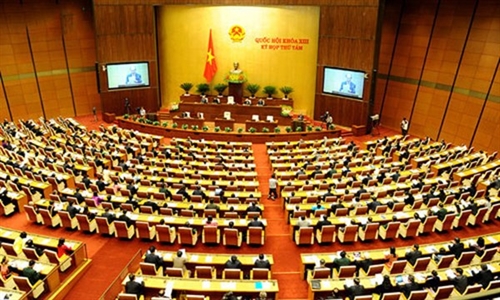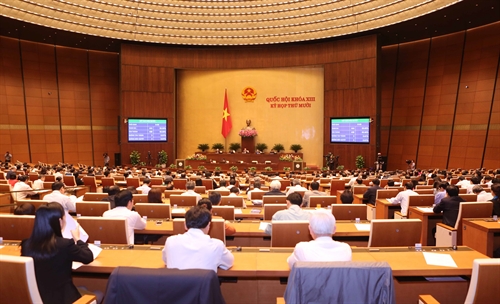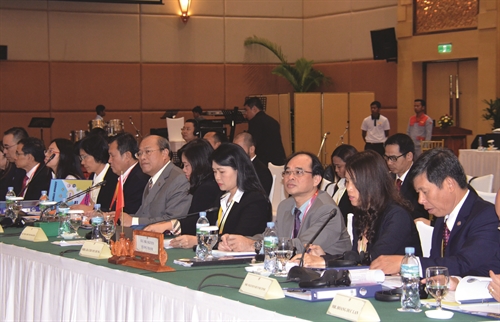From January 1 next year, Vietnam’s revised Law on State Budget (the Law) will take effect, providing more complete and comprehensive legal grounds for the state budget management.
The Law has been devised in tune with the Constitution, the Law on Organization of the Government, the Law on Organization of Local Administrations and other relevant laws as well as international practices.
Composed of 77 articles arranged in seven chapters, the Law regulates the formulation, implementation, audit, account finalization and oversight of the state budget. It also points to tasks and powers of related agencies, organizations, units and individuals in the field of state budget.
Comprehensive and strict management of state budget
Under the Law, the state budget must be managed in a unified, centralized, democratic, effective, thrifty, transparent and fair manner. Such management will be assigned and decentralized. Powers of state management agencies at various levels must be linked with their responsibilities.
Compared to the current Law on State Budget promulgated in 2002, the Law revises many important contents concerning the scope of the state budget, state budget deficit, limits of local budget borrowings, state budget contingency, financial reserve funds, etc. The new provisions aim to ensure the unified, strict and effective management of the state budget and national financial security and conform with international practices in the field of state budget.
Under Article 5 of the Law, state budget revenues include all revenues from taxes and fees; all charges collected for services provided by state agencies (for those which have to pay expenses for their operation at a pre-fixed level, such expenses will be subtracted), and charges collected for services provided by public non-business units and state enterprises which are required by law to be paid into the state budget; grants provided by foreign governments and overseas organizations and individuals to the Vietnamese Government and local administrations; and other revenues as prescribed by law.
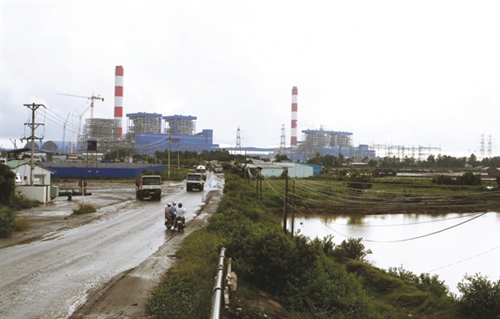 |
| Dinh An economic zone’s Duyen Hai power center in Tra Vinh province __Photo: Vu Sinh/VNA |
According to the Law, budget deficit is the negative difference between total budget expenditures, excluding payment of principal debts, and total budget revenues. The Law clearly states that local budget deficit is a part of state budget deficit. This new provision aims to enhance the control of state budget deficit. As per the Law, only provincial-level budgets may incur deficit. In other words, state budget deficit includes deficit of the central budget and deficit of provincial-level budgets. Local budget deficit will be allowed only for investment in projects that are included in medium-term public investment plans approved by provincial-level People’s Councils. It will be offset with domestic borrowings, including local administration bonds, on-lending loans provided by the Government, and other domestic loans as prescribed by law. The Government will specify cases in which local budget deficit is permitted so as to ensure the debt repayment by localities and the total deficit of the state budget.
The current law does not govern state extra-budgetary financial funds, which operate in accordance with law and their charters. To ensure effective management of these funds, the Law states that the state budget will not finance their operation. The provision of state budget funds to support charter capital of a state extra-budgetary financial fund must suit the capacity of the state budget and may be effected only when the fund is established and operates under law, has independent financial capacity, and has revenue sources and spending tasks different from those of the state budget.
To improve the disclosure and public oversight of the state budget, the Law requires budgets at various levels and budget-funded units to disclose their budget estimates, information on state budget use and final accounts; results of implementation of recommendations of the State Audit Office of Vietnam, except detailed data and explanatory reports in the fields of national defense, security, and national reserves; and state budget-related procedures.
The state budget disclosure will be carried out in one or several of the following forms: disclosure at meetings, posting up at working offices of agencies, organizations and units; issuance of publications; issuance of written notices to related agencies, organizations, units and individuals; publishing on websites; and reporting in the mass media.
The time limit for disclosure is specified in the Law. A state budget estimate report will be disclosed within five working days after it is sent by the Government to National Assembly deputies or by a People’s Committee to People’s Council deputies. Reports on state budget estimates already decided by competent authorities and statements of final state budget accounts already approved by competent authorities, and reports on state budget audit results or results of implementation of recommendations of the State Audit Office of Vietnam will be disclosed within 30 days after the date of their issuance. Quarterly and biannual reports on state budget implementation will be disclosed within 15 days from the end of each quarter and six-month period. Annual reports on state budget implementation will be disclosed when they are submitted by the Government to the National Assembly at the mid-year session of the following year.
For state budget-related procedures, the disclosure will be carried out in the form of posting up at places of transaction and publishing on the websites of the agencies. Revenue-collecting agencies, finance agencies and the State Treasury will disclose regulations on processes and procedures for declaration, collection, payment, exemption, reduction, payment extension and refund of revenues, advance payment, allocation and payment of the state budget fund.
If failing to disclose full information in a timely manner, the above responsible agencies will be handled in accordance with law.
Besides, the state budget will be overseen by the public. Vietnam Fatherland Front Committees at various levels will organize public oversight of the observance of regulations on management and use of the state budget, implementation of annual state budget estimates and disclosure of the state budget.
Assignment of revenue sources and spending tasks
The Law devotes Chapter III to providing revenue sources and spending tasks of budgets at various levels. It clarifies the relationships among the budgets at various levels and increases the assignment of revenue sources and spending tasks to localities. The new assignment approach is expected to help localities proactively perform their socio-economic development, national defense and security tasks and implement policies on social security, hunger eradication and poverty reduction. At the same time, state management agencies will intensify their guidance, inspection and supervision in the field of state budget.
This Chapter has some new contents.
Enterprise income tax, including that of enterprises applying the entire-branch accounting is determined to be a revenue shared between the central budget and local budgets. As per the current law, enterprise income tax of enterprises applying the entire-branch accounting wholly belongs to the central budget.
The Law expands the competence of provincial-level People’s Councils to decide to assign revenue sources and spending tasks to local budgets at each level. Under Article 39 of the Law, commune and township budgets are entitled to a portion of revenues from non-agricultural land use levy, license tax collected from business individuals and households, agricultural land use levy collected from households and land and house registration fees. Provincial-level People’s Councils will decide on the proportions of these revenues belonging to commune and township budgets.
Current regulations on assignment of socio-economic development spending tasks are retained in accordance with the law on organization of local administrations. Particularly, scientific and technological research spending tasks are assigned to provincial-level budgets. District- and commune-level budgets do not have these tasks.
Regarding targeted transfers from a higher-level budget to a lower-level budget, the Law determines the following tasks for which additional transfers will be provided from a higher budget: implementing a new policy or regime promulgated by superior authorities which has not been included in the budget estimates made in the first year of the budget stabilization period; implementing national target programs and other programs and projects as assigned by superior authorities; support of expenditures for overcoming consequences of disasters, catastrophes and epidemics which go beyond the balancing capacity of the lower-level budgets; and support for the implementation of a number of particularly important programs and projects with great impacts on local socio-economic development. Specific support levels will be determined for each program or project. According to the Law, the total annual funding support for development investment from the central budget to local budgets must not exceed 30% of the central budget’s total expenditures for capital construction investment.- (VLLF)




